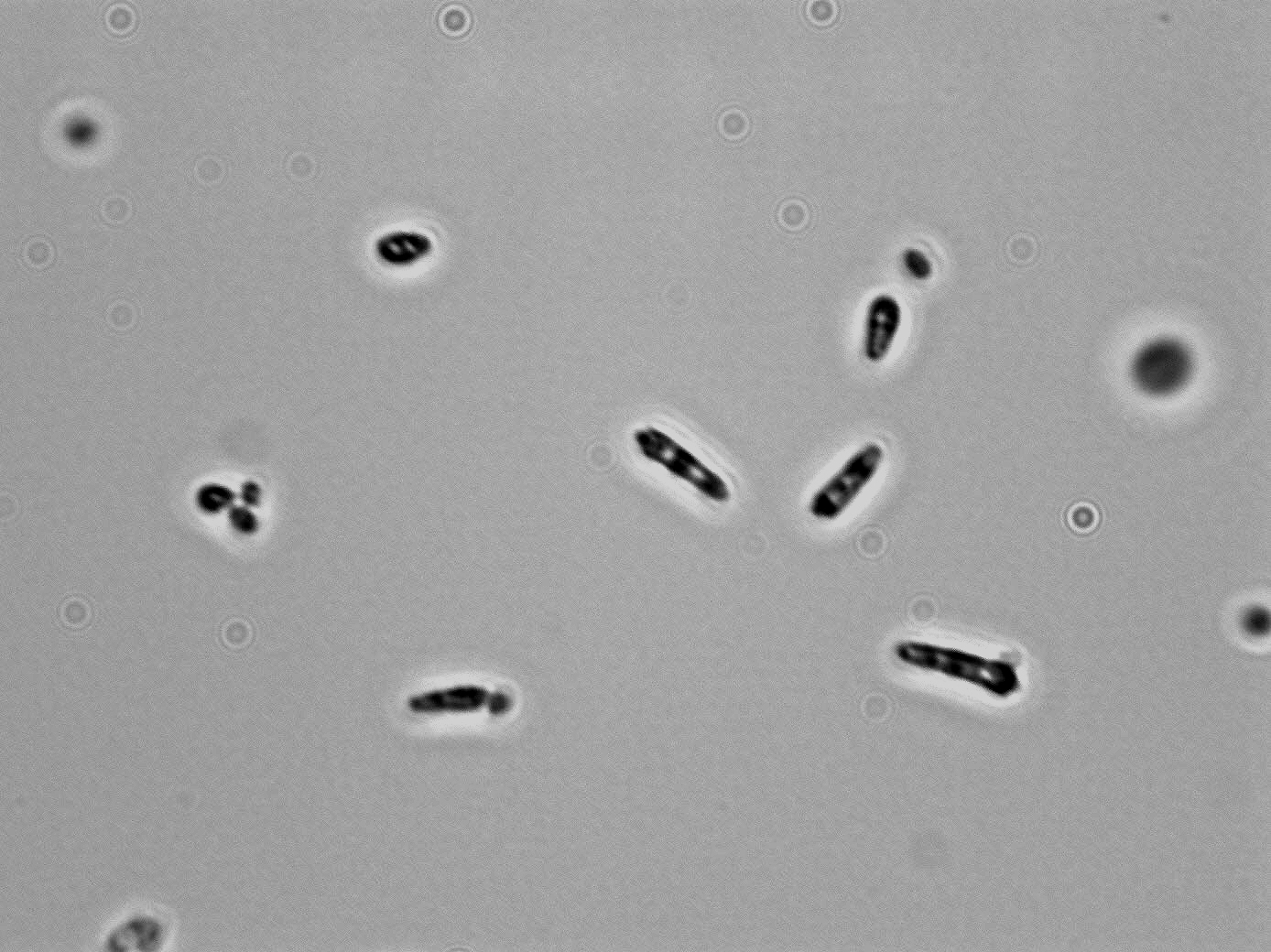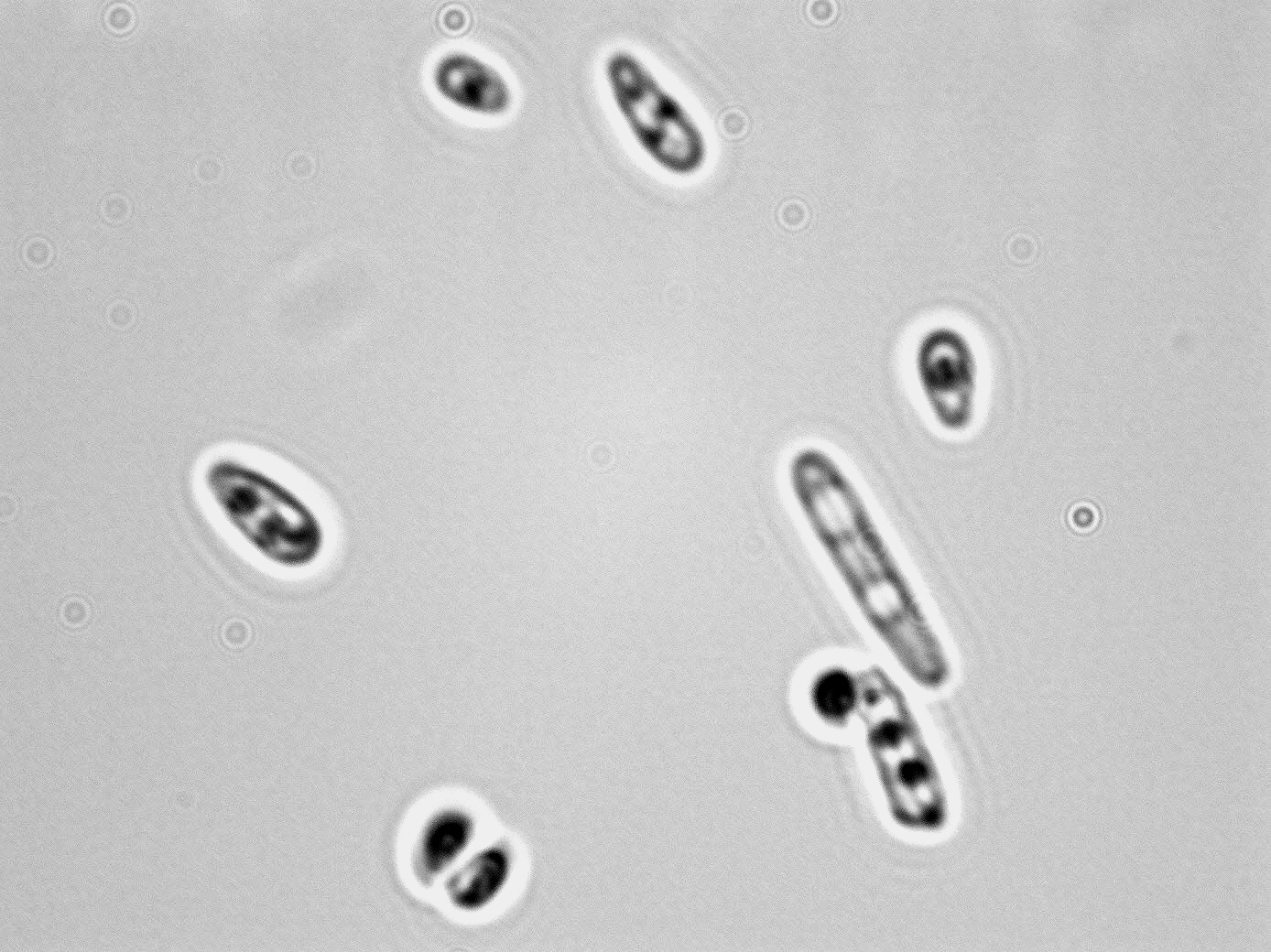Genus/species (aliases): Pichia guilliermondii (Candida guilliermondii anamorph; Candida melibiosi, Endomyces guilliermondii)
Classification: Ascomycete, teleomorph
Morphology:
- Cell: reproduces by budding, ellipsoidal, ovoidal, and clavate, occur singly and in pairs, or short chains; pseudohyphae formed.
- Colony: SDA - flat, moist, smooth, cream to yellow.
- Spore: hat-shaped ascospores, mostly found in nature in the haploid state; asexual blastospores also formed.
- Zygote: Heterogamic or isogamic zygotes.
- Ascus: evanescent; contain one or four spores.
- Liquid Growth: pellicles formed are thin or lacking; rings may be formed.
 |
 |
Physiological Traits:
- Fermentation: Glucose, Sucrose, Raffinose, Trehalose; variable: Galactose, Melibiose
- Assimilation: Galactose, Glucosamine, Ribose, D-Xylose, Sucrose, Maltose, Trehalose, Raffinose, Glycerol, Ribitol, Xylitol, Succinate, Citrate, Ethanol, Variable: Sorbose, Arabinose, Rhamnose, Cellobiose, Salicin, Arbutin, Melibiose, Inulin, Lactate, Gluconate, Galactitol, Mannitol, Glucitol, Arabinitoll; no assimilation of nitrate; use of ethylamine, lysine and cadaverine as sole N source; no growth in vitamin-free medium, requires biotin
- Growth: 35, 37, 40, 42 C: variable
- Growth Sensitivities: resistant to 0.01% cycloheximide, some strains to 0.1%; 10% NaCl: +; 16% NaCl: variable; variable growth on high glucose
- Chromosome bands: 6 to 8
Ecological Traits:
Found in wasps, human infections, sea water, faeces of animals, buttermilk, soil, grape juice and fish
Distinguishing Features:
Spore forming, in a hat or saturn-shape. If spores are spherical or ellipsoidal with a weak fermentation and is Asci dehiscent. Positive pellicle development: film develops in five days.
Role in wine:
Can be found in wine in barrels and lead to a cosmetic (film) or organoleptic defects in the wine. Spoilage of wine appear as a white scum on the surface, having a cheese-like appearance. Can bring about deleterious concentrations of ethyl acetate.
Sensitivities:
- SO2: n/a
- Sorbate: n/a
- DMDC: n/a
- pH: n/a
- Acids: n/a
- Ethanol: n/a
- Anaerobiosis: X
- Heat: n/a
References:
- Boulton, R., V. Singleton, L. Bisson, and R. Kunkee. 1996. Principles and Practices of Winemaking. Chapman & Hall, New York.
- Wickerham, L.J. Validation of the species picia guilliermondii. 1966. Journal of Bacteriology. 92: 1269.
